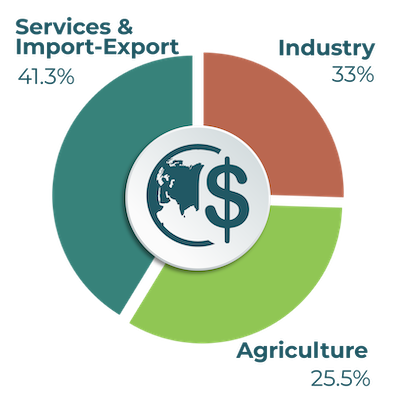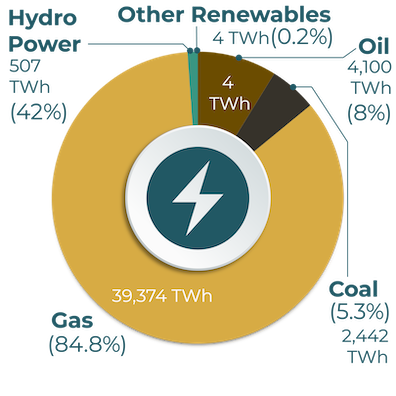OVERVIEW UZBEKISTAN
СТРАНОВОЙ ПРОФИЛЬ
Узбекистан
Изучите обзор, в котором отражается общий контекст уязвимости и устойчивости Узбекистана к изменению климата. Изучите влияние климата и уязвимость по секторам. Ознакомьтесь с результатами Оценки риска и уязвимости к изменению климата для Узбекистана. Изучите различные варианты адаптации к изменению климата в ключевых секторах.
Country Context
Uzbekistan is a landlocked country in Central Asia with a total land area of 447,400 km2. It shares borders with Kazakhstan, Turkmenistan, Afghanistan, Tajikistan and Kyrgyzstan. Uzbekistan's terrain is mostly flat-to-rolling sandy desert, with desert forests accounting for approximately 78% of the country's land area. The remaining 20% is covered with mountains and foothills (the eastern and northeastern areas). Uzbekistan is expected to experience a range of changes and risks associated to climate change across the country. Uzbekistan has a population of 31.8 million (2016) growing at an annual rate of 1.7%. The country has a Gross Domestic Product (GDP) of $67.2 billion growing at a rate of 7.8% in 2016. GDP growth peaked at 9.0% in 2008. According to 2016 data, the country’s GDP is dominated by the service sector contributing 49.5%, industry (including mining, construction, electricity, water and gas) contributing 32.9%, and the agricultural sector contributing 17.6% of GDP.
Key Facts & Figures
Geography and population
With a territory of 447,400 km2, Uzbekistan has a population of 33.6 million and has a relatively population density of 75 inhabitants per km2, with 16.9 million (50%) living in rural areas and an urban population of 16.6 million (50%).
Economy
Uzbekistan's economy is focused on the services and import-export sector, agriculture and industry sectors. Agriculture accounts for over 25.5% of national GNI. Industry makes up about 33% of Uzbekistan's GNI.
Agriculture
The largest crops are wheat, cotton, potato, tomoto and other vegetables. Other minor crops include grape, onion, apple, cucumber and other vegetables.
Land Use
Uzbekistan utilizes most of its arable land for agricultural activities, which account for over 64% of land use. Forest areas make up nearly 9 per cent of territory.
Energy Supply
Uzbekistan bases it's energy supply predominantly on natural gas. Coal accounts for 5%, while hydropower and other renewable resources account for less than 2% of the energy supply.





